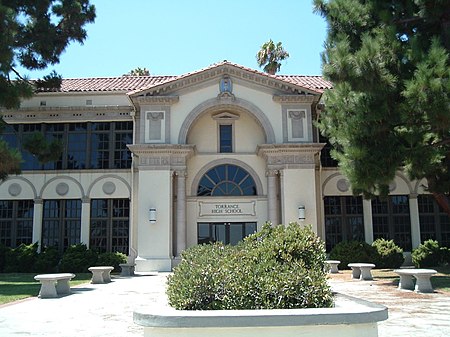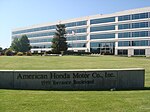Main Building (Torrance High School)
1917 establishments in CaliforniaBuildings and structures on the National Register of Historic Places in Los Angeles County, CaliforniaCommons category link is locally definedHistory of Torrance, CaliforniaMediterranean Revival architecture in California ... and 3 more
School buildings completed in 1917School buildings on the National Register of Historic Places in CaliforniaTorrance High School

The Main Building of Torrance High School is located on the campus in Torrance, southwestern Los Angeles County, California. The Main Building was opened to students as Torrance School in 1917.
Excerpt from the Wikipedia article Main Building (Torrance High School) (License: CC BY-SA 3.0, Authors, Images).Main Building (Torrance High School)
Watson Avenue, Torrance
Geographical coordinates (GPS) Address Nearby Places Show on map
Geographical coordinates (GPS)
| Latitude | Longitude |
|---|---|
| N 33.830833333333 ° | E -118.32027777778 ° |
Address
Watson Avenue 1716
90501 Torrance
California, United States
Open on Google Maps







